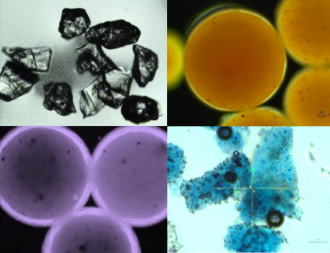Media Release
From: Cell PressPeer-reviewed Experimental Study
Magnetic 'springs' break down marine microplastic pollution
Plastic waste that finds its way into oceans and rivers poses a global environmental threat with damaging health consequences for animals, humans, and ecosystems. Now, using tiny coil-shaped carbon-based magnets, researchers in Australia have developed a new approach to purging water sources of the microplastics that pollute them without harming nearby microorganisms. Their work appears July 31 in the journal Matter.
"Microplastics adsorb organic and metal contaminants as they travel through water and release these hazardous substances into aquatic organisms when eaten, causing them to accumulate all the way up the food chain" says senior author Shaobin Wang, a professor of chemical engineering at the University of Adelaide (Australia). "Carbon nanosprings are strong and stable enough to break these microplastics down into compounds that do not pose such a threat to the marine ecosystem."
Although often invisible to the naked eye, microplastics are ubiquitous pollutants. Some, such as the exfoliating beads found in popular cosmetics, are simply too small to be filtered out during industrial water treatment. Others are produced indirectly, when larger debris like soda bottles or tires weather amid sun and sand.
To decompose the microplastics, the researchers had to generate short-lived chemicals called reactive oxygen species, which trigger chain reactions that chop the various long molecules that make up microplastics into tiny and harmless segments that dissolve in water. However, reactive oxygen species are often produced using heavy metals such as iron or cobalt, which are dangerous pollutants in their own right and thus unsuitable in an environmental context.
To get around this challenge, the researchers found a greener solution in the form of carbon nanotubes laced with nitrogen to help boost generation of reactive oxygen species. Shaped like springs, the carbon nanotube catalysts removed a significant fraction of microplastics in just eight hours while remaining stable themselves in the harsh oxidative conditions needed for microplastics breakdown. The coiled shape increases stability and maximises reactive surface area. As a bonus, by including a small amount of manganese, buried far from the surface of the nanotubes to prevent it from leaching into water, the minute springs became magnetic.
"Having magnetic nanotubes is particularly exciting because this makes it easy to collect them from real wastewater streams for repeated use in environmental remediation," says Xiaoguang Duan, a chemical engineering research fellow at Adelaide who also co-led the project.
As no two microplastics are chemically quite the same, the researchers' next steps will center on ensuring that the nanosprings work on microplastics of different compositions, shapes and origins. They also intend to continue to rigorously confirm the non-toxicity of any chemical compounds occurring as intermediates or by-products during microplastics decomposition.
The researchers also say that those intermediates and byproducts could be harnessed as an energy source for microorganisms that the polluting plastics currently plague. "If plastic contaminants can be repurposed as food for algae growth, it will be a triumph for using biotechnology to solve environmental problems in ways that are both green and cost efficient," Wang says.
###
This work was supported by the Australian Research Council, the National Natural Science Foundation of China, and the Science and Technology Program of Guangdong Province.



